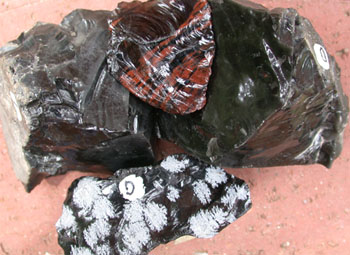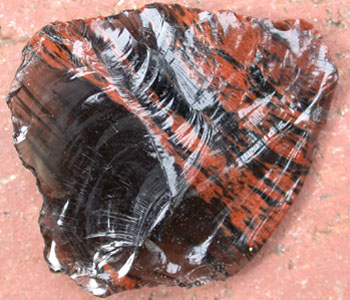| If a rock looks like a block of (colored) glass, with no visible mineral crystals, it has a glassy texture.
Superficially, a glassy texture suggests cooling that was so extremely fast that no crystals could form. However, composition is also vitally important. The high silica (SiO2) concentrations found in felsic rocks (rhyolite composition) causes a rock to form a glass much more readily than it would in low silica rocks such as basalt. Thus, the rate of cooling of a felsic and mafic lava flow could be the same, but the felsic flow would form a glass because it is packed with silica.
|



